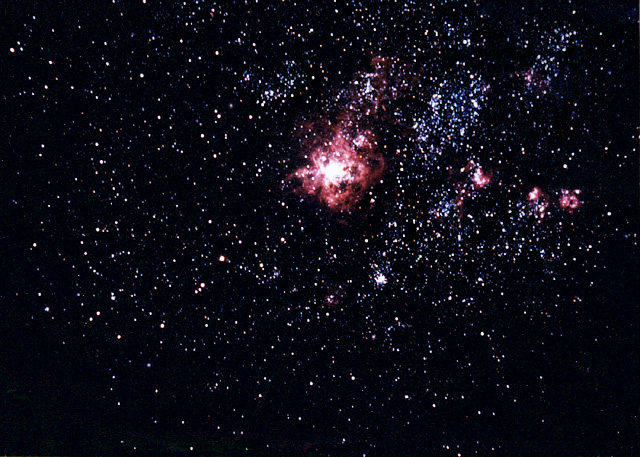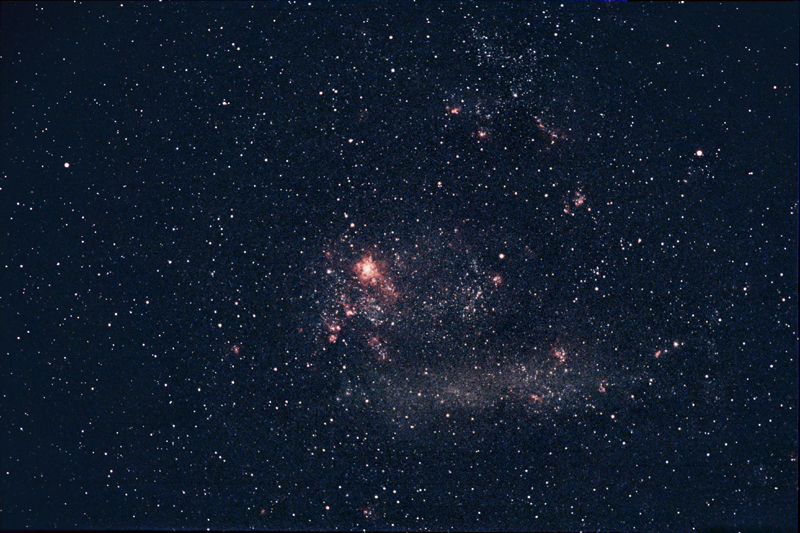
35 minutes exposure, Kodak Ektachrome 200 slide film.
300mm f/2.8 refractor Canon lens.

Visible to the naked eye as a faint "star" near the eastern end of the bar of the Large Cloud of Magellan, the Tarantula nebula is one of the "must see" objects of the southern skies. In an 8" telescope the trailing whisps of nebulosity that give the nebula its name are easily visible. As is a small cluster of stars near the centre that look like the eyes of the spider. In a larger telescope, the nebula really does look like a giant arachnid lurking in the sky.
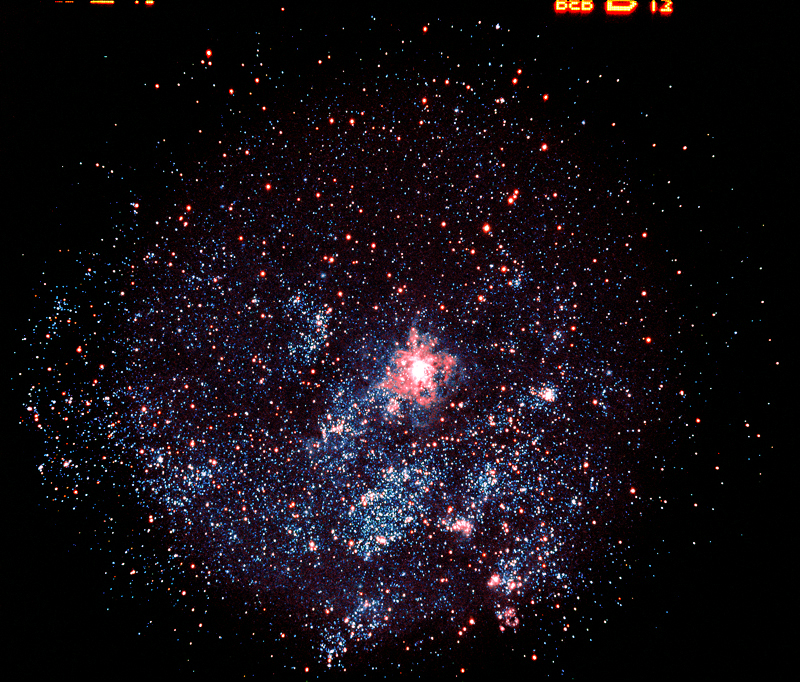
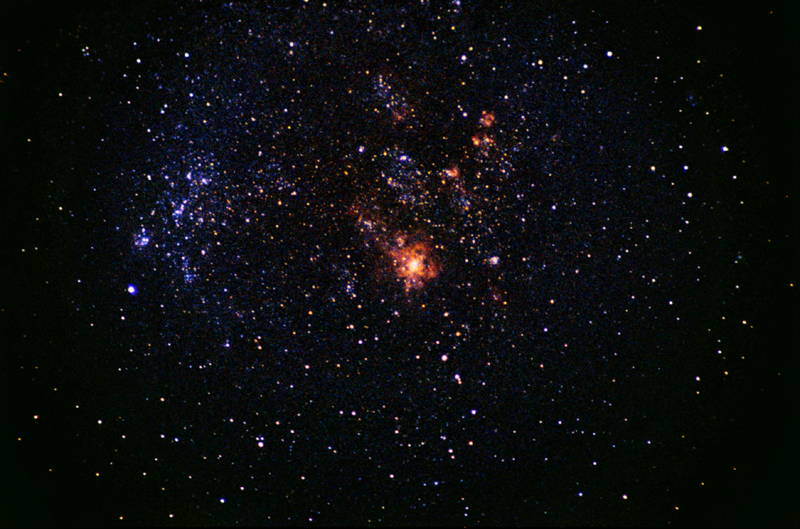
The Large Cloud of Magellan contains the densest region of the sky for deep-sky objects, and is a fabulous region for exploring, even with a small telescope. As is seen in the photograph, numerous other nebulae and several open clusters are visible in the vacinity of NGC 2070.
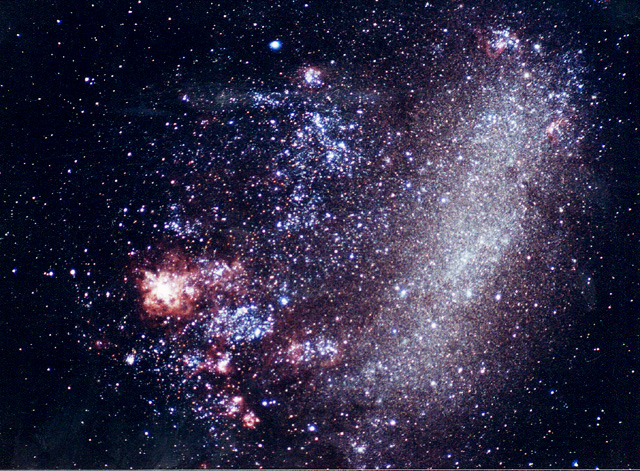
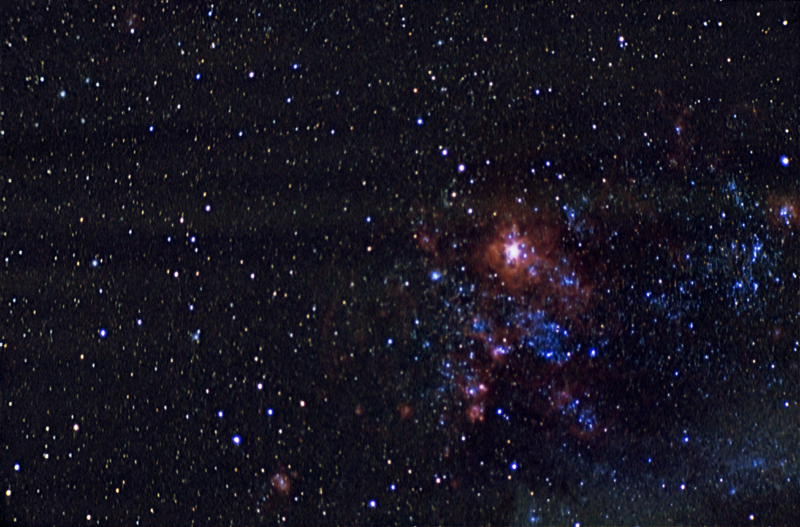
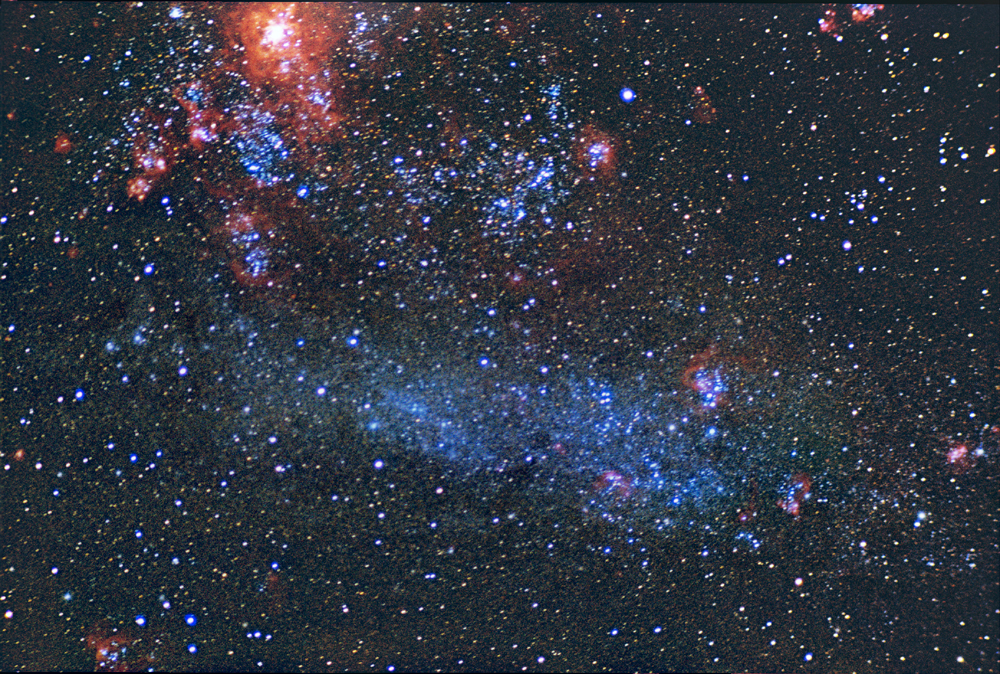
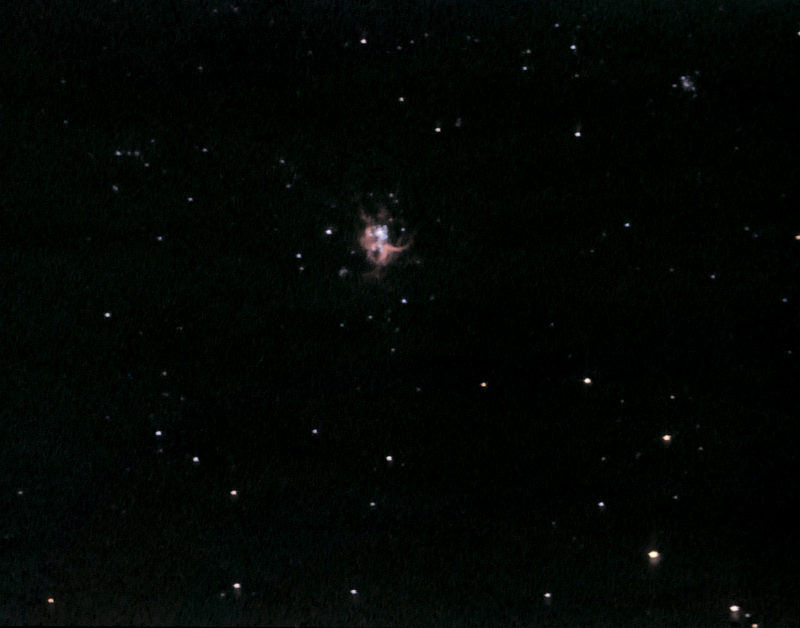
At the core of the Tarantula nebula is a dense cluster of hot, young stars that are the source of the light for the nebula. Some of the stars in this cluster are among the brightest and most massive known.
